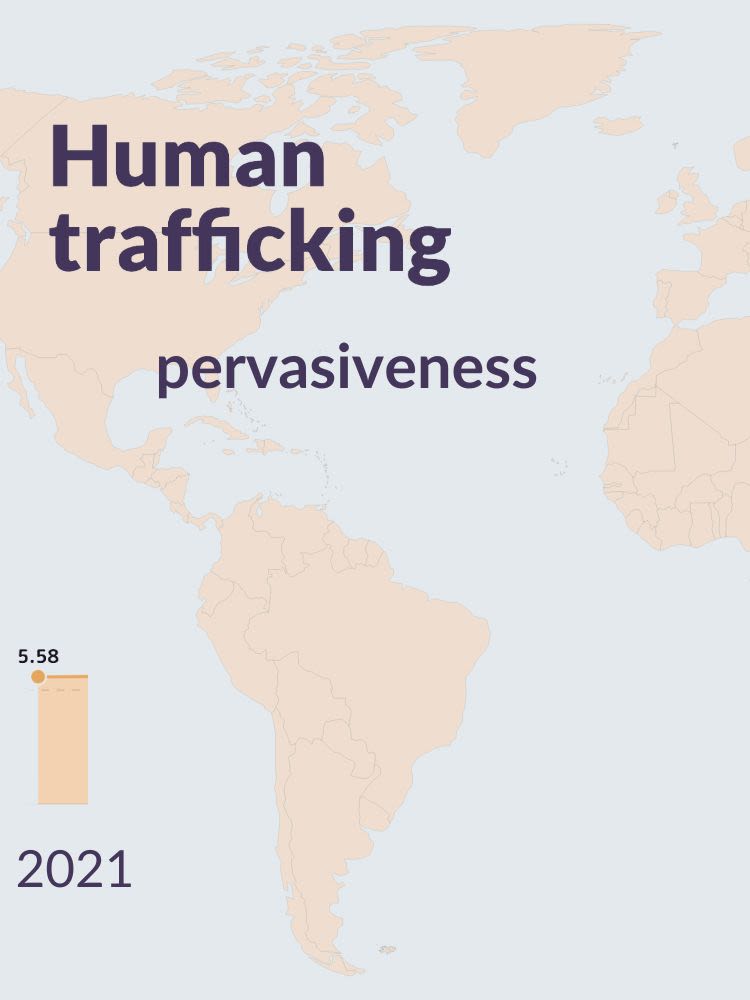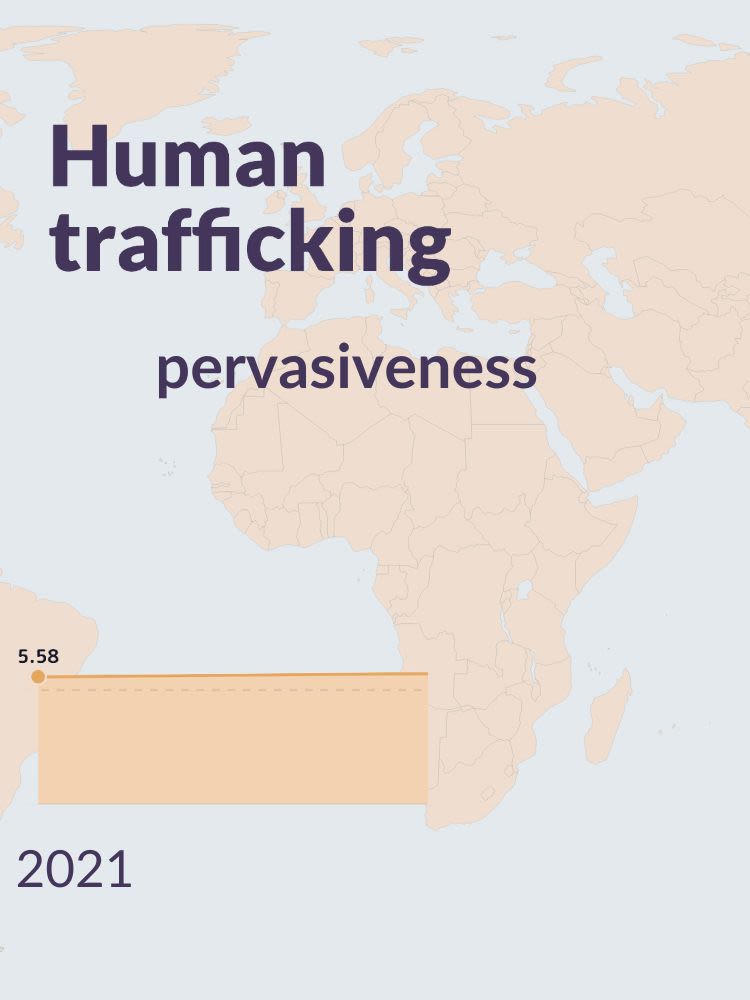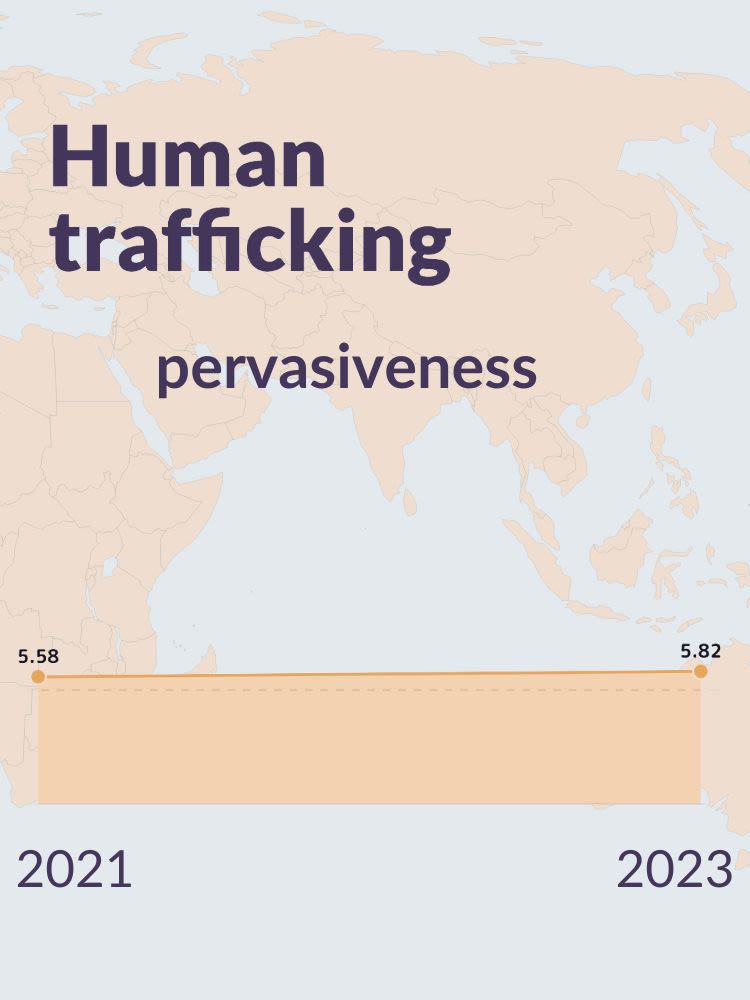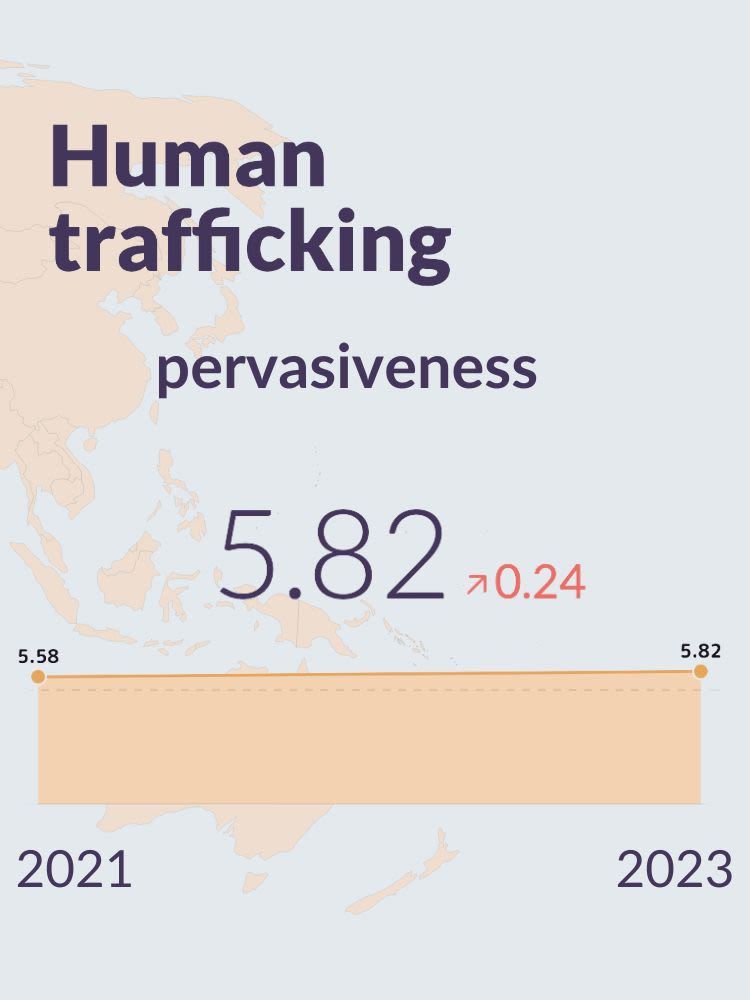Human trafficking
A complex ecosystem of criminal markets.

Human trafficking, like organized crime in general, is getting worse worldwide. According to the Organized Crime Index, its prevalence grew from 5.58 in 2021 and 5.82 in 2023. It was the most pervasive criminal market in 2021 and the second one in 2023, after the inclusion of financial crimes.
As defined within the context of modern slavery, human trafficking encompasses the illegal trade of humans for the purpose of exploitation, including trafficking for the removal of organs. Unlike human smuggling, human trafficking does not require the movement of individuals and affects men, women, and children alike. When movement occurs, it may involve both cross-border and internal flows, such as from rural to urban areas. Human trafficking includes all stages of the illicit activity—recruitment, transfer, harboring, and receipt of persons—carried out through coercion, deception, abduction, or fraud, irrespective of the victim’s consent. In accordance with international protocols, exploitation in human trafficking involves, at a minimum, forced prostitution, other forms of sexual exploitation, forced labor, slavery or practices akin to slavery, servitude, or organ removal.
According to the latest information from the Index, the countries with the highest prevalence of human trafficking are Yemen, Eritrea, and Afghanistan, all scoring 9 out of 10, followed by the United Arab Emirates and Turkmenistan, with a score of 8.5.
Ecosystem of trafficking - Technology

Like any criminal market, human trafficking does not happen in isolation, but within a criminal ecosystem. It is driven by enablers such as money laundering, corruption at all levels and technology, and its occurrence can be related to other criminal activities, such as arms trafficking, financial crimes, drug trafficking, migrant smuggling and cybercrime.
In South-East Asia, for instance, cyber-scam operations have lured thousands of people to work for organized criminal networks, where they are forced to defraud other people through online scams, where the use of AI and deepfakes is increasing.
In such cases and similar ones, technology plays a central role throughout the cycle of crime, from the planning, profiling and recruiting, transporting and tracking victims, coercing and deceiving them, advertising to buyers and hiding and moving the proceedings of crime. Technologies are enabling human traffickers to avoid detection, reduce the need for human resources for their operations, increase potential victims and buyers, all with lower entry costs.
However, technology can also be used to respond to human trafficking dynamics. Initiatives such as Tech Against Trafficking, are getting tech businesses together to map the landscape, accelerate tech solutions, and bring together anti-trafficking and tech experts for dialogue.
Ecosystem of trafficking - Environment

Environmental crime and the impacts of ongoing climate change are also enablers of human trafficking. As climate change increases the risk of disasters affecting people’s livelihoods, it can contribute to conflict and instability, especially in areas affected by poverty and scarcity of resources.
These conditions, along with an imbalance between labour demand and supply and the rise of unethical recruitment agencies, may result in individuals turning to migrant smugglers, consequently exposing them to the risk of human trafficking and related forms of exploitation and abuse.
Environmental crimes such as illegal logging, mining, and fishing often exploit vulnerable communities in regions with weak governance. Criminal networks involved in environmental crimes might exploit local populations, coercing them into forced labor under harsh conditions. The economic deprivation caused by environmental degradation undermines local economies, leading to unemployment and poverty, making individuals more likely to fall prey to traffickers promising better opportunities but delivering exploitation and abuse.
Additionally, the same networks trafficking in illegal environmental goods often engage in human trafficking, using their established routes and corruption networks to smuggle and exploit humans. Profits from environmental crimes fund trafficking operations, expanding criminal networks. This intersection highlights how environmental degradation can destabilize communities economically and socially, leading to human exploitation and emphasizing the broader impact of exploiting natural resources on human trafficking.




